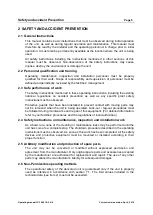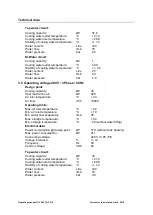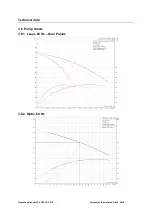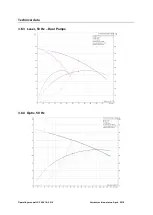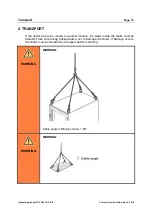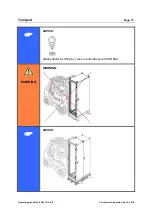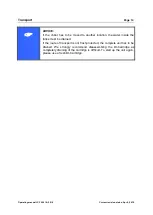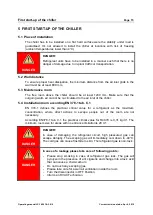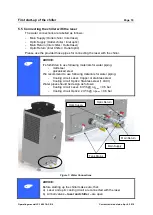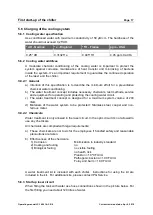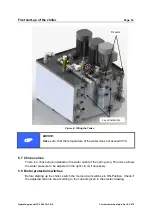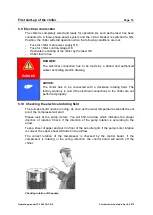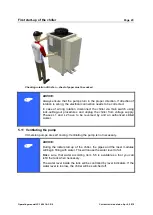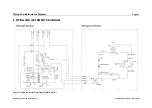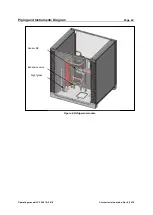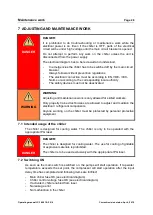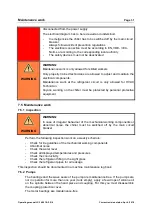
First start-up of the chiller
Page 17
Operating manual LC 340.01-A.3.5/6
Current revision status: Apr 4, 2019
5.6 Charging of the cooling system
5.6.1 Cooling water specification
Use conditioned water with maximum conductivity of 50 µS/cm. The hardness of the
water should not exceed 0,25°dH.
5.6.2 Cooling water additives
A moderate chemical conditioning of the cooling water is important to protect the
system against corrosion, maintenance of heat transfer and minimizing of bacteria
inside the system. It’s an important requirement to guarantee the continued operation
of the laser and the chiller.
5.6.2.1 General
a) Intention of this specification is to describe the minimum effort for a preventative
chemical water conditioning.
b) The water treatment concept includes necessary chemicals, test methods, service
and equipment for operating and protecting the cooling water circuit.
c) The water treatment concept is designed for a maximum system volume of 200
liters.
d) Materials of the water system to be protected: Stainless steel, cooper and non-
ferrous metal.
5.6.2.2 Chemicals
Water treat
ment is only allowed in the laser circuit. In the optic circuit it’s not allowed to
use any chemicals.
All chemicals are complied with legal requirements:
a) These chemicals are not toxic for the employees if handled safely and reasonable
precautions are taken.
b) Effectiveness of the chemicals:
1) Corrosion
Minimization to industry standard
2) C
oating and
fouling
no
3) Biological fouling
no visible fouling
no health risk
Plankton < 10³ CFU/ml
Pathogenic bacteria < 10 CFU/ml
Foray and barm < 10 CFU/ml
A water treatment kit is included with each chiller. Instructions for using the kit are
included in the kit. For additional kits, please contact IPG Service.
5.6.3 Start up laser circuit
When filling the tank with water use hose connections shown in the picture below. For
the first filling you need about 120 litres of water.
° dH - German
° e - England
° fH - France
ppm - USA
0,25° dH
0,31325° e
0,445° fH
4,45 ppm CaCO
3



